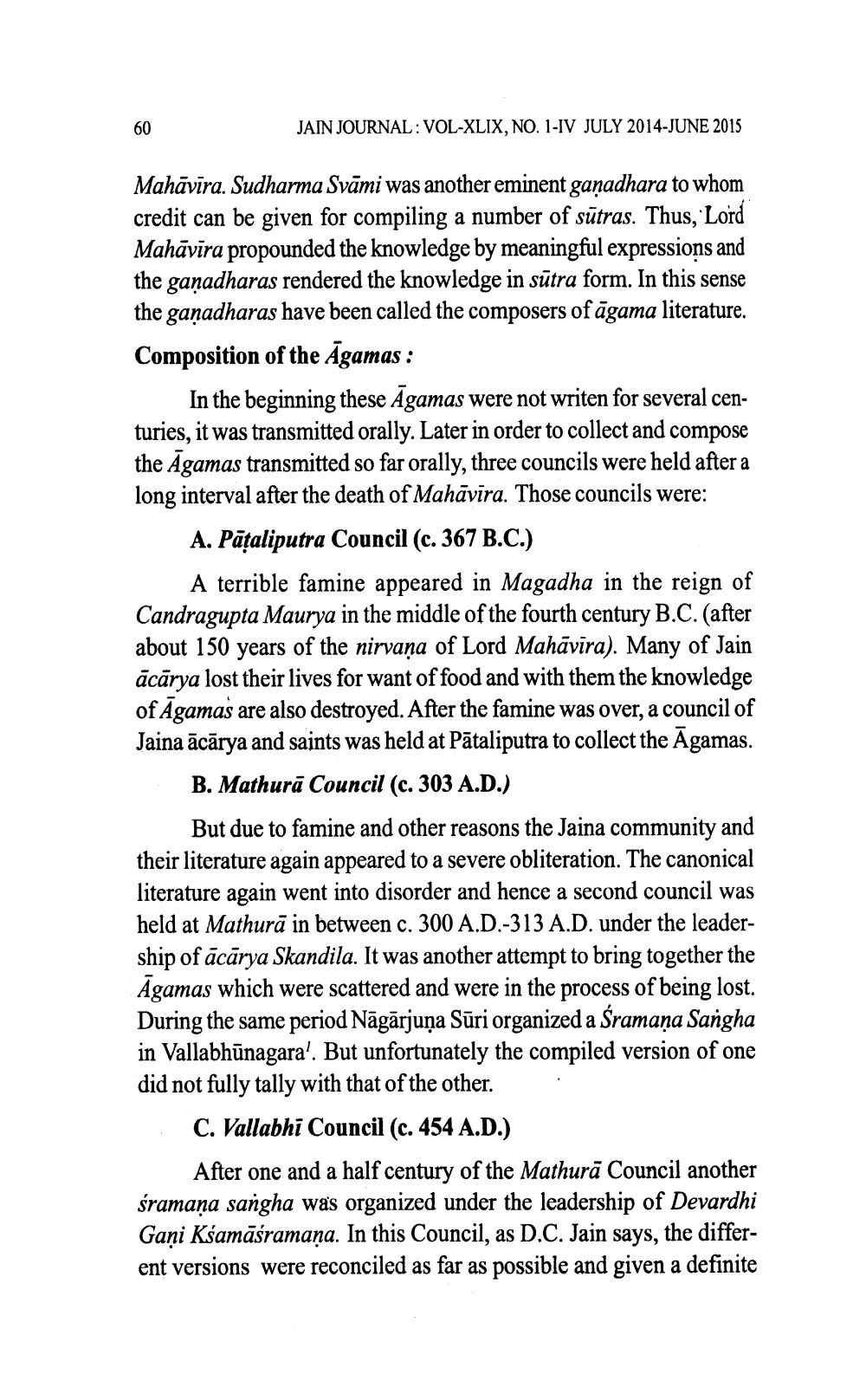________________
JAIN JOURNAL: VOL-XLIX, NO. 1-IV JULY 2014-JUNE 2015
Mahavira. Sudharma Svami was another eminent gaṇadhara to whom credit can be given for compiling a number of sutras. Thus, Lord Mahavira propounded the knowledge by meaningful expressions and the gaṇadharas rendered the knowledge in sutra form. In this sense the ganadharas have been called the composers of agama literature. Composition of the Āgamas:
60
In the beginning these Agamas were not writen for several centuries, it was transmitted orally. Later in order to collect and compose the Agamas transmitted so far orally, three councils were held after a long interval after the death of Mahavira. Those councils were:
A. Pātaliputra Council (c. 367 B.C.)
A terrible famine appeared in Magadha in the reign of Candragupta Maurya in the middle of the fourth century B.C. (after about 150 years of the nirvana of Lord Mahavira). Many of Jain ācārya lost their lives for want of food and with them the knowledge of Agamas are also destroyed. After the famine was over, a council of Jaina ācārya and saints was held at Pataliputra to collect the Agamas.
B. Mathura Council (c. 303 A.D.)
But due to famine and other reasons the Jaina community and their literature again appeared to a severe obliteration. The canonical literature again went into disorder and hence a second council was held at Mathura in between c. 300 A.D.-313 A.D. under the leadership of ācārya Skandila. It was another attempt to bring together the Agamas which were scattered and were in the process of being lost. During the same period Nagarjuna Sūri organized a Śramana Sangha in Vallabhunagara'. But unfortunately the compiled version of one did not fully tally with that of the other.
C. Vallabhi Council (c. 454 A.D.)
After one and a half century of the Mathura Council another śramana sangha was organized under the leadership of Devardhi Gani Ksamāśramana. In this Council, as D.C. Jain says, the different versions were reconciled as far as possible and given a definite




